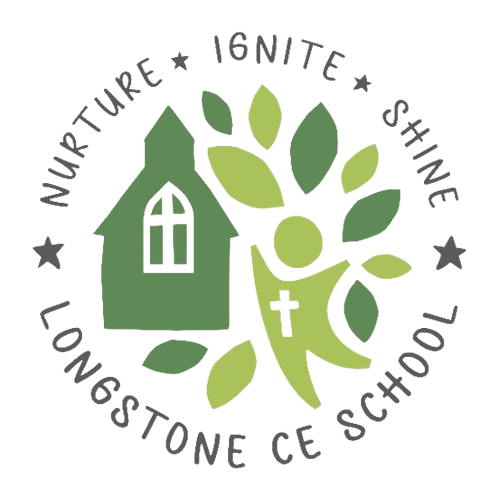Handwriting
We teach a 'semi-cursive' style of writing at Longstone, an example of each letter can be seen here:

The main difference between this style and more complicated cursive styles is that the letters do not have a ‘lead in’ stroke. This means that letters are formed the same way whether they are joined or not. Children are initially taught each individual letter before learning how to join them in discreet handwriting sessions two or three times a week.
Handwriting Lines
Children are supported with different sized spaces between the handwriting guide lines depending on the size of their handwriting and fine motor ability. The children learn the vocabulary of top broken line, top solid line, bottom solid line and bottom broken line to refer to each of the guide lines. The consistency in this means that all children and adults can explain where letters begin and how they are formed.

There are four sizes of handwriting lined paper with size 1 being the largest and size 4 being the smallest.
Types of Letters
Letters that reach the top broken line are referred to as 'tall' letters. Letters that sit between the two solid lines are 'short' letters and those which reach the bottom broken line are 'tail' letters. Here are some examples:
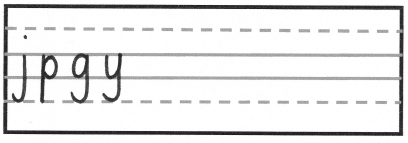


Letter Families
Lowercase letters are grouped into the following letter families.
The straight line family Letters based on a single vertical line
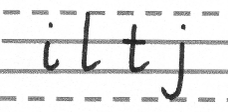
The coat-hanger family Letters based on a 'c' shape
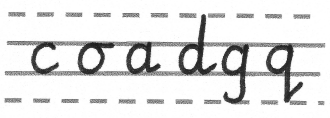
Letter e (the distant cousin of the coat-hanger family, begins differently but still based on a 'c' shape.

The bridge family letters that have a vertical down stroke followed by a diagonal movement to the right.


The zig-zag family Both letters start on the top solid line, have a diagonal stroke and have joining mark that sits on the top solid line.

The smile family Both letters start on the top solid line, begin with a downward stroke, curve back up to the top solid line and then down to the bottom solid line.
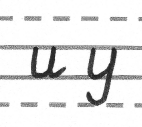
The misfits! Letters that are unique and individual and do not fit with any other letter groups.

Joining Letters
When children are ready, they are taught when, how and when not to (we call these break letters) join letters together. Have a look at our example again to see where these break letters are:

